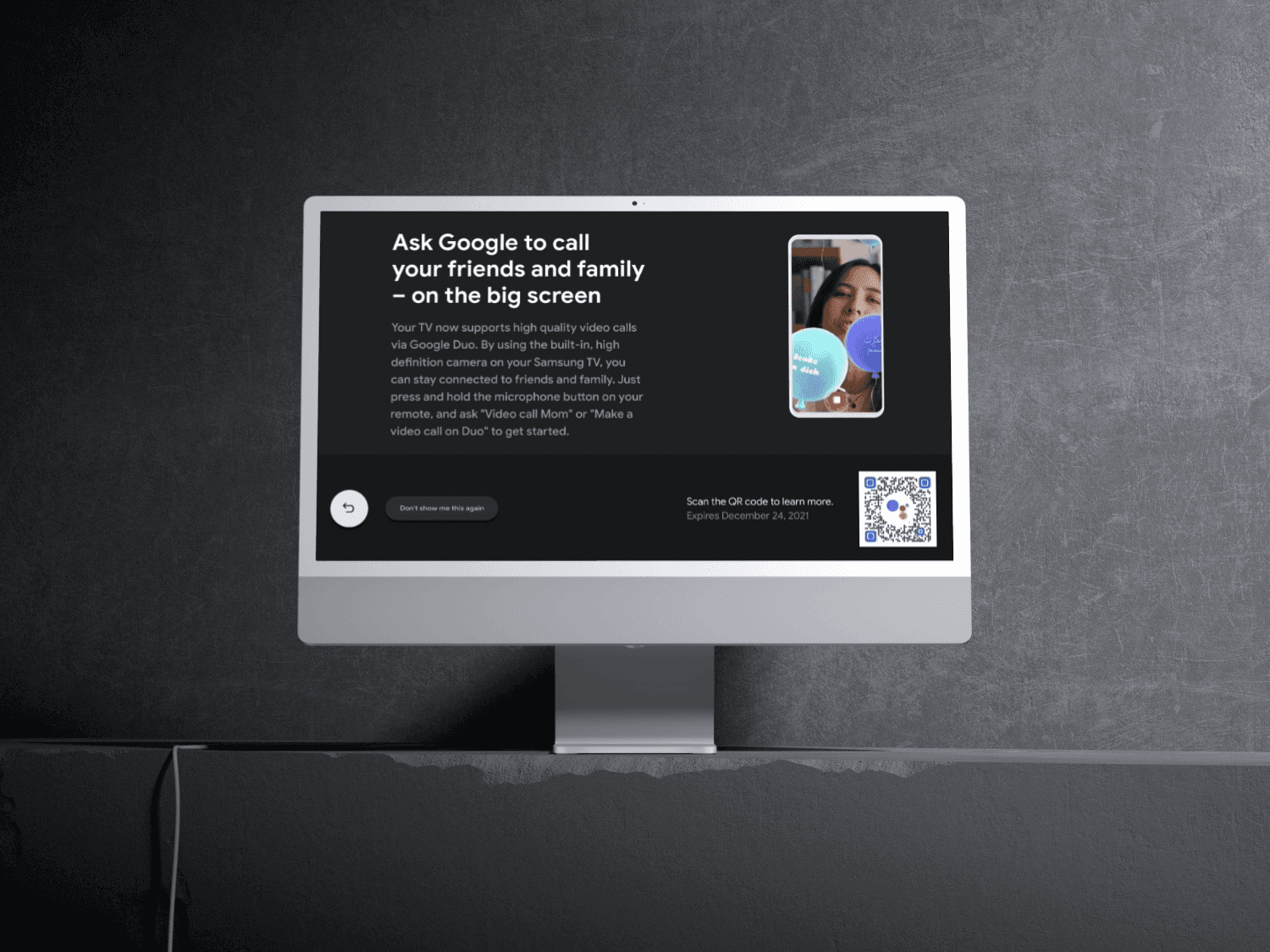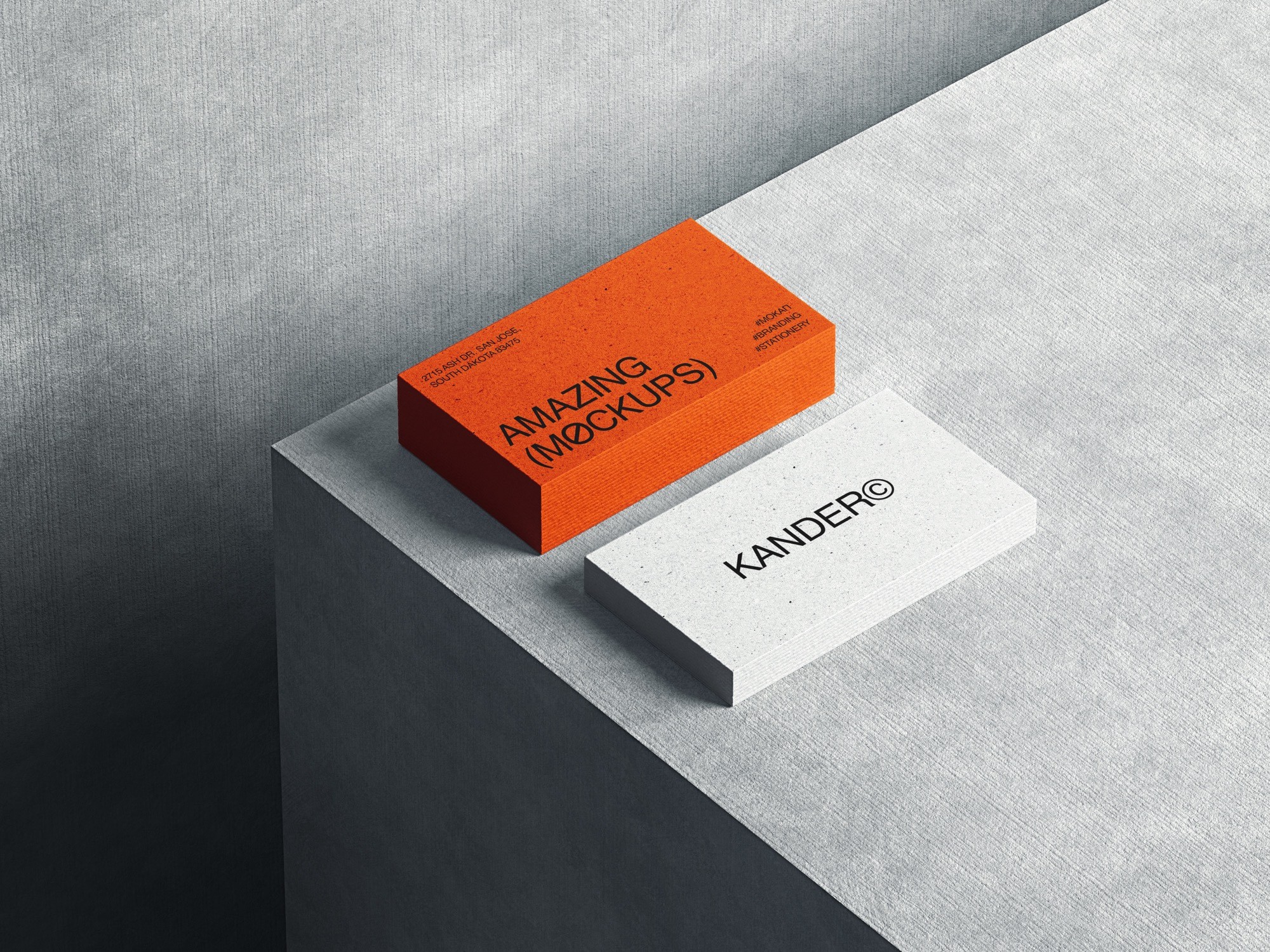Google TV
Google TV
Google TV
Description
Google wanted to zone in on previous customer's attention while watching tv and upsell them via Hey Google Assistant in tandem with Huge, Inc.
Images by ls.graphics. Screens by Apple.
Description
Google wanted to zone in on previous customer's attention while watching tv and upsell them via Hey Google Assistant in tandem with Huge, Inc.
Images by ls.graphics. Screens by Apple.
Description
Google wanted to zone in on previous customer's attention while watching tv and upsell them via Hey Google Assistant in tandem with Huge, Inc.
Images by ls.graphics. Screens by Apple.
Client
Google TV
Year
2021
Type
Screen Design
Client
Google TV
Year
2021
Type
Screen Design
Client
Google TV
Year
2021
Type
Screen Design


Case Study
Problem:
Google wanted to design a TV screen ad overlay template for their Hey Google TV assistant, which would be displayed on various TV screens and promote different products. The challenge was to create a visually appealing and versatile template that could accommodate a variety of products and still maintain the brand identity of Google. The template needed to incorporate a QR code that would direct customers to a product landing page.
Approach:
The design team began by conducting research to understand the Hey Google TV assistant, its features, and the target audience. We also analyzed Google's brand guidelines to ensure their design would align with the company's visual identity.
To address the need for versatility, the team devised a modular approach. We created a template with four different styles, each offering a unique layout and design. This approach allowed for flexibility in accommodating different types of products and varying amounts of product information.
The team prioritized the inclusion of a clear, prominent QR code in each style. The QR code would be strategically placed to capture the attention of viewers and enable them to easily access the corresponding product landing page through their smartphones or other devices.
Considering the remote team members, the design agency Huge Inc, and Google team members collaborated closely throughout the project. Regular virtual meetings were conducted to discuss design concepts, share progress, and gather feedback. Effective communication channels were established to ensure a smooth workflow, despite the geographical distance.
Case Study
Problem:
Google wanted to design a TV screen ad overlay template for their Hey Google TV assistant, which would be displayed on various TV screens and promote different products. The challenge was to create a visually appealing and versatile template that could accommodate a variety of products and still maintain the brand identity of Google. The template needed to incorporate a QR code that would direct customers to a product landing page.
Approach:
The design team began by conducting research to understand the Hey Google TV assistant, its features, and the target audience. We also analyzed Google's brand guidelines to ensure their design would align with the company's visual identity.
To address the need for versatility, the team devised a modular approach. We created a template with four different styles, each offering a unique layout and design. This approach allowed for flexibility in accommodating different types of products and varying amounts of product information.
The team prioritized the inclusion of a clear, prominent QR code in each style. The QR code would be strategically placed to capture the attention of viewers and enable them to easily access the corresponding product landing page through their smartphones or other devices.
Considering the remote team members, the design agency Huge Inc, and Google team members collaborated closely throughout the project. Regular virtual meetings were conducted to discuss design concepts, share progress, and gather feedback. Effective communication channels were established to ensure a smooth workflow, despite the geographical distance.
Case Study
Problem:
Google wanted to design a TV screen ad overlay template for their Hey Google TV assistant, which would be displayed on various TV screens and promote different products. The challenge was to create a visually appealing and versatile template that could accommodate a variety of products and still maintain the brand identity of Google. The template needed to incorporate a QR code that would direct customers to a product landing page.
Approach:
The design team began by conducting research to understand the Hey Google TV assistant, its features, and the target audience. We also analyzed Google's brand guidelines to ensure their design would align with the company's visual identity.
To address the need for versatility, the team devised a modular approach. We created a template with four different styles, each offering a unique layout and design. This approach allowed for flexibility in accommodating different types of products and varying amounts of product information.
The team prioritized the inclusion of a clear, prominent QR code in each style. The QR code would be strategically placed to capture the attention of viewers and enable them to easily access the corresponding product landing page through their smartphones or other devices.
Considering the remote team members, the design agency Huge Inc, and Google team members collaborated closely throughout the project. Regular virtual meetings were conducted to discuss design concepts, share progress, and gather feedback. Effective communication channels were established to ensure a smooth workflow, despite the geographical distance.




Case Study
My Role:
Contribute relevant UI and overall design concepts to the design and design leadership team. Provide variations of solutions via wireframe, lo-fi + hi-fi sketches, polished in situ designs, prototypes and presentations to stakeholders.
Constraints:
One primary constraint was the need to keep Google's brand guidelines intact. The design team ensured that the overall aesthetic, typography, color palette, and use of Google's logo adhered to the company's brand identity. This constraint required careful consideration to maintain consistency and uphold Google's visual standards throughout the template's design.
Another constraint was the limited space available on the TV screen for the ad overlay. The team had to optimize the design layout to accommodate enough space for the QR code, product information, and any other necessary elements while maintaining a visually appealing composition.
Furthermore, the team had to address the challenge of designing a template suitable for various products. We needed to create a versatile layout that could cater to different product types, sizes, and information. This constraint required careful planning and consideration to ensure that the template could handle a wide range of products effectively.
Conclusion:
Despite the challenges of maintaining Google's brand guidelines, creating a versatile template suitable for different products, and coordinating with remote team members from Huge Inc and Google, the design team successfully developed a TV screen ad overlay template for Hey Google TV assistant. The template incorporated four distinct styles, allowing for flexibility in promoting various products. The inclusion of the QR code provided an interactive element, enabling customers to easily access the respective product landing page. The remote collaboration between the design agency and Google team members facilitated efficient communication and alignment throughout the project. The end result was a visually appealing, versatile, and brand-consistent template that effectively promoted different products on TV screens, while adhering to Google's brand guidelines.
Case Study
My Role:
Contribute relevant UI and overall design concepts to the design and design leadership team. Provide variations of solutions via wireframe, lo-fi + hi-fi sketches, polished in situ designs, prototypes and presentations to stakeholders.
Constraints:
One primary constraint was the need to keep Google's brand guidelines intact. The design team ensured that the overall aesthetic, typography, color palette, and use of Google's logo adhered to the company's brand identity. This constraint required careful consideration to maintain consistency and uphold Google's visual standards throughout the template's design.
Another constraint was the limited space available on the TV screen for the ad overlay. The team had to optimize the design layout to accommodate enough space for the QR code, product information, and any other necessary elements while maintaining a visually appealing composition.
Furthermore, the team had to address the challenge of designing a template suitable for various products. We needed to create a versatile layout that could cater to different product types, sizes, and information. This constraint required careful planning and consideration to ensure that the template could handle a wide range of products effectively.
Conclusion:
Despite the challenges of maintaining Google's brand guidelines, creating a versatile template suitable for different products, and coordinating with remote team members from Huge Inc and Google, the design team successfully developed a TV screen ad overlay template for Hey Google TV assistant. The template incorporated four distinct styles, allowing for flexibility in promoting various products. The inclusion of the QR code provided an interactive element, enabling customers to easily access the respective product landing page. The remote collaboration between the design agency and Google team members facilitated efficient communication and alignment throughout the project. The end result was a visually appealing, versatile, and brand-consistent template that effectively promoted different products on TV screens, while adhering to Google's brand guidelines.
Case Study
My Role:
Contribute relevant UI and overall design concepts to the design and design leadership team. Provide variations of solutions via wireframe, lo-fi + hi-fi sketches, polished in situ designs, prototypes and presentations to stakeholders.
Constraints:
One primary constraint was the need to keep Google's brand guidelines intact. The design team ensured that the overall aesthetic, typography, color palette, and use of Google's logo adhered to the company's brand identity. This constraint required careful consideration to maintain consistency and uphold Google's visual standards throughout the template's design.
Another constraint was the limited space available on the TV screen for the ad overlay. The team had to optimize the design layout to accommodate enough space for the QR code, product information, and any other necessary elements while maintaining a visually appealing composition.
Furthermore, the team had to address the challenge of designing a template suitable for various products. We needed to create a versatile layout that could cater to different product types, sizes, and information. This constraint required careful planning and consideration to ensure that the template could handle a wide range of products effectively.
Conclusion:
Despite the challenges of maintaining Google's brand guidelines, creating a versatile template suitable for different products, and coordinating with remote team members from Huge Inc and Google, the design team successfully developed a TV screen ad overlay template for Hey Google TV assistant. The template incorporated four distinct styles, allowing for flexibility in promoting various products. The inclusion of the QR code provided an interactive element, enabling customers to easily access the respective product landing page. The remote collaboration between the design agency and Google team members facilitated efficient communication and alignment throughout the project. The end result was a visually appealing, versatile, and brand-consistent template that effectively promoted different products on TV screens, while adhering to Google's brand guidelines.

